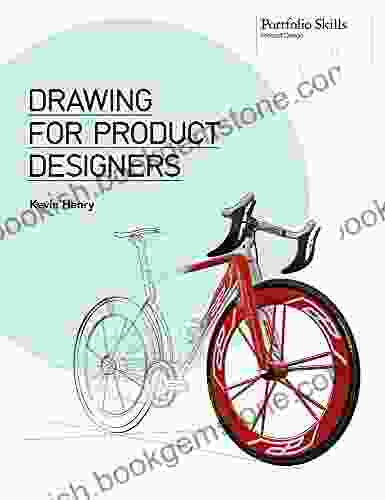Drawing is a fundamental skill for product designers, enabling them to communicate ideas, visualize concepts, and present designs effectively. A strong portfolio of drawings can showcase a designer's technical abilities, creativity, and problem-solving skills.
Types of Drawings for Product Designers
Product designers create various types of drawings depending on the stage of the design process:
4.5 out of 5
| Language | : | English |
| File size | : | 11646 KB |
| Text-to-Speech | : | Enabled |
| Enhanced typesetting | : | Enabled |
| Print length | : | 549 pages |
| Screen Reader | : | Supported |
- Sketches: Quick, freehand drawings used to capture ideas and explore concepts.
- Wireframes: Skeletal diagrams that define the structure and layout of a product.
- Prototypes: Tangible models used to test and refine design solutions.
- Detailed Drawings: Precise technical drawings that provide specifications for manufacturing.
- Perspectives: Drawings that depict products in a realistic 3D environment.
Essential Skills for Drawing
- Observation: Accurately capturing the details and proportions of objects.
- Spatial Reasoning: Understanding and representing objects in three dimensions.
- Line Quality: Controlling the thickness, darkness, and texture of lines.
- Shading Techniques: Creating depth, form, and texture through light and shadow.
- Composition: Arranging elements within a drawing to create a balanced and visually appealing result.
Techniques for Product Designers
Product designers employ specialized techniques to enhance their drawings:
- Orthographic Projection: Drawing an object from multiple angles (top, front, side) to create a complete representation.
- Isometric Drawing: A 3D drawing that utilizes three axes to create a realistic perspective while maintaining accurate proportions.
- Perspective Drawing: Using vanishing points to create the illusion of depth and distance.
- Section Drawing: Dividing an object into sections to reveal its internal structure.
- Exploded View: Disassembling a product to show its components and relationships.
Drawing Tools for Product Designers
- Pencils: Range of grades and hardness for detailed shading and linework.
- Charcoal: Smooth, velvety texture for quick sketches and shading gradients.
- Markers: Bold, vibrant colors for emphasizing key features and creating graphic elements.
- Digital Drawing Tablets: Precision and control for creating detailed digital drawings.
- 3D Modeling Software: Allows for realistic rendering and creation of 3D models from drawings.
Building a Strong Drawing Portfolio
- Develop Your Skills: Continuously practice and improve your drawing abilities.
- Create a Diverse Portfolio: Showcase a range of drawing types, techniques, and styles.
- Include Detailed Annotations: Explain the purpose and process behind your drawings.
- Highlight Your Problem-Solving Abilities: Demonstrate how your drawings contribute to solving design challenges.
- Seek Feedback: Get constructive criticism to identify areas for improvement.
Drawing is an indispensable skill for product designers, empowering them to effectively communicate their design ideas, refine solutions, and impress potential employers. By developing strong drawing abilities, mastering essential techniques, and building a comprehensive portfolio, product designers can enhance their credibility and showcase their value.
























































































































































































































































































































































































































































































































































































































































































































